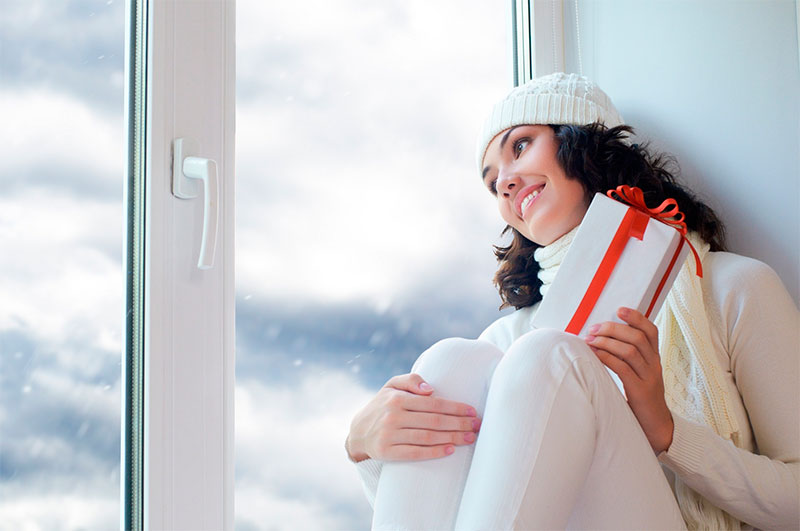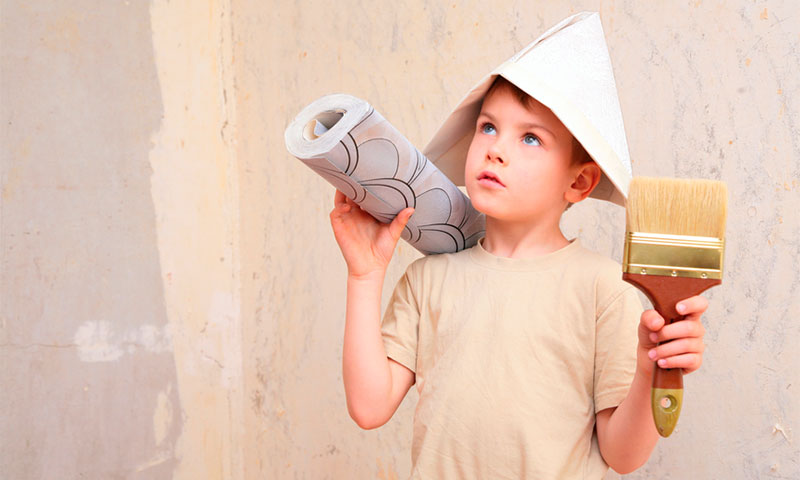Stretch ceilings belong to a new generation of building and finishing materials, they organically fit into the interior, and often are the central object of decoration. The use of modern technologies in the finishing of ceilings allows to embody unusual design solutions, increases the comfort of housing. Fabric or film canvases hide the defects of the ceiling and engineering communications, they are distinguished by their practicality and long service life.
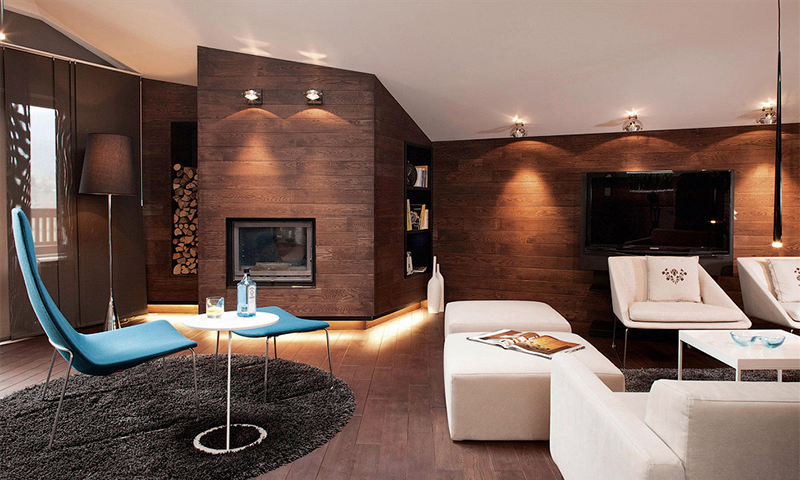
Content:
The best manufacturers of suspended ceilings - which company to choose
Manufacturers of cloths for stretch ceilings in the Russian market are mainly represented by companies from European countries: Italy, France, Germany and Belgium. A large number of products arrives in the country from China, but its quality is inferior to that of Europe.
Stretch ceilings from Europe enjoy authority in the Russian market. These are products of trademarks:
- Pongs;
- CTN;
- Clipso;
- Descor;
- Cerutti.
Types of stretch ceilings
Stretch fabric ceiling
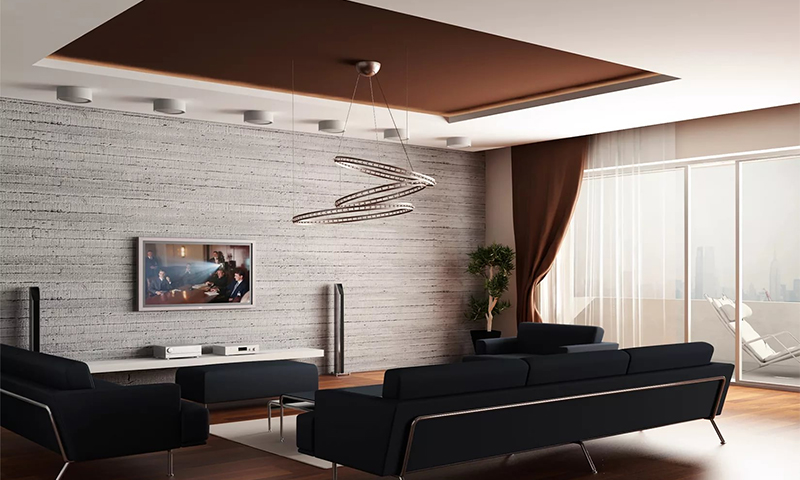
Cloth for fabric ceilings produced from polyester impregnated with polyurethane. Due to the texture of the material, the installed canvas creates the effect of a perfectly aligned plastered surface. Cloth fabric is 2-3 times more expensive than polyvinyl chloride, it is used in the design of luxurious interiors.
The range of leading manufacturers includes fabrics with dirt-repellent and anti-bacterial coatings, as well as noise insulation and water-repellent fabrics.
Benefits:
- Do not emit toxic substances, do not have a specific "chemical" smell;
- Pass air;
- Resistant to mechanical stress (almost 20 times stronger than PVC sheets). A ball that has rebounded from the floor, or a swirling champagne cork will not disturb the integrity of the fabric web;
- Have higher sound-proofing indicators in comparison with PVC a ceiling;
- Do not sustain combustion. Some paintings are impregnated with special compounds that increase the fire safety of the material;
- Expanded scope due to the large temperature range of operation (from - 40 ° C to + 80 ° C) - the canvas can be installed in a street gazebo or in an unheated cottage, loggia;
- Powerful lamps mounted on the ceiling will not cause the fabric to burn out in the installation area and will not melt it;
- Simplicity and safety of installation at which use of the heat gun is not supposed;
- The possibility of decorating the ceiling of this art painting and multiple staining of the surface.
Disadvantages:
- Higher price;
- PVC is inferior in practicality - only regular dry cleaning is recommended, as water and liquid cleaning products are able to leave stains;
- Absorb odors (installation in the kitchen and in rooms with high saturation of odorous substances is not recommended);
- Unable to hold water in the event of a water or heating system failure on the upper floors
- Cannot be used in complex ceiling structures due to low elasticity;
- Cannot be used for re-assembly (if for some reason it was necessary to dismantle the canvas, it can no longer be re-installed);
- Perhaps only the mechanical connection of the two parts of the canvas, which is important when arranging rooms with a width of more than 5 meters. The fabric does not weld and does not stick together;
- Faded photo printing;
- Despite the processing of special antibacterial impregnation is not desirable to use in rooms with high humidity levels.
Glossy polyvinyl chloride film ceilings
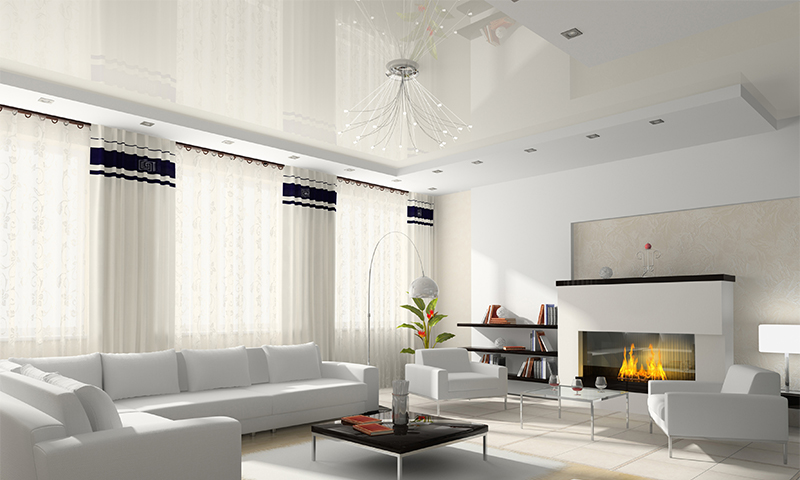
A distinctive feature of the glossy ceiling is a lacquer surface, which has a mirror and reflective effect (reflectance up to 70%). This ceiling coating can visually increase the space of the room where it is installed.
It is the glossy fabrics that manufacturers offer in the widest range: the material is available in bright, rich colors, as well as in delicate pastel tones.
Benefits:
- The possibility of implementing unusual lighting solutions due to the mirror effect;
- The lack of electrostatic voltage prevents dust from attracting and accumulating dirt on the surface;
- Combined with other materials and textures;
- Photo printing bright;
- Can be used in the bathroom and other rooms with high humidity due to high moisture resistance;
- The high elasticity of the film allows it to withstand a large amount of water (up to 100 liters per 1 m²) in the event of an accident of a plumbing or heating system that occurred at the neighbors from the upper floor;
- The possibility of re-installation (in cases where the ceiling is fixed by harpoon technology);
- Do not absorb odors;
Disadvantages:
- Caring for the canvas requires a certain skill, with inept cleaning the surface will be covered with divorce;
- High temperatures from incandescent lamps and direct sunlight give rise to yellow spots, and cracks may appear from the cold on the canvas. Do not use at temperatures below + 5 ° C;
- The canvas can be accidentally pierced. In some cases, specialists will be able to restore it, but the place of “injury” will not remain unnoticed. As a rule, you have to re-drag the ceiling.
Ceilings from matt PVC film
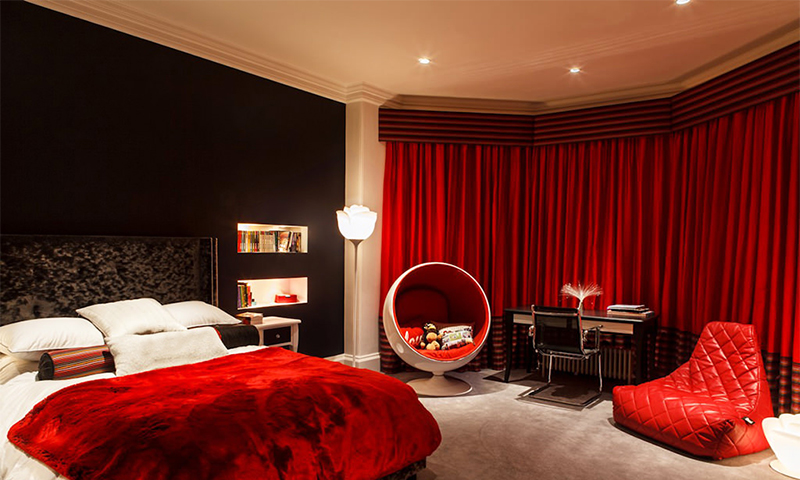
In contrast to the glossy matte ceiling scatters falling on him rays (light reflectance up to 5%). Matte PVC film sheets have a smooth (satin) or embossed texture. Ceilings of matte PVC film are most popular due to the affordable price and the possibility of use in any interior.
Benefits:
- Universality - harmoniously fit into the atmosphere of any premises, regardless of their style and purpose;
- Photo printing has rich colors;
- Perfectly combined with other types of finishes, including stucco or materials that mimic it;
- They create a comfortable atmosphere - they absorb the glare of light and gently muffle them, but they do not obscure the space;
- Practical, easy to clean with a soft, slightly damp cloth;
- Can be re-installed.
Disadvantages:
- It is undesirable to install cloths with even a slight embossing in the kitchen - it is difficult to clean the porous surface from fat. Having a powerful hood partially solves the problem.
- Since the canvas is under tension, it can be accidentally punctured with a sharp object. Independently restore the integrity of the ceiling can not be. After the restoration of the damaged area by specialists, it will have to be decorated. Sometimes it is easier to replace the canvas with a new one.
- Can be installed only in heated rooms.
Tension ceiling options
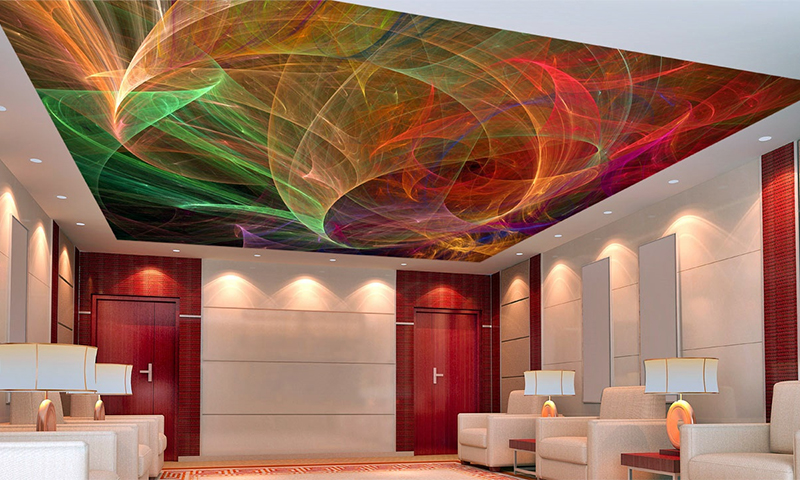
Applied material
The type of material used depends on:
1. The possibility of operating the ceiling in certain climatic conditions: at high or low temperatures, in dampness and in conditions of high humidity;
2. The saturation of the ink when applied to the canvas photo printing;
3. The ability of the web to hold water in case of flooding by neighbors from the upper floors;
4. The method of attachment and the possibility of dismantling the ceiling fabric, followed by re-installation;
5. The breadth of colors and variety of textures;
6. Practicality.
Texture
The texture of the canvas is the visual-tactile features of the surface, with the exception of color: degree of smoothness, relief, level of light reflection. The texture of the material used must be combined with the style decision in which the design of the room is made.
In addition to matte, satin and glossy texture of the canvas can be the following:
1. Perforated - webs with holes are used in ceilings with internal illumination;
2. Metallic - has a characteristic metallic luster, changes the hue and color saturation depending on the lighting;
3. Suede - velvety surface imitates natural fabric with a short nap;
4. Silk - imitates natural material, has a muffled gloss, characteristic of silk;
5. Marble - smooth surface with characteristic pattern for the stone;
6. Mother of pearl - the canvas has a soft sheen with pearls characteristic for pearls.
The surface of the canvas can be smooth or embossed. Embossing perform simple (shagreen) or more complex (in the form of flowers, simple or intricate geometric shapes).
Colour
When choosing the color of the stretch ceiling, you should focus not only on your own color preferences, but also on the interior of the room, the degree of its illumination in the daytime and in the evening (when turning on the light sources). It is desirable that in the room side by side no more than three colors.
Ceiling construction
The ceiling structure can be single-level or include several tiers. Special designs include ceilings of the “starry sky” type, as well as with internal illumination. Multi-level ceilings help to divide the room or room into zones and accent the interior.
Which stretch ceiling to choose
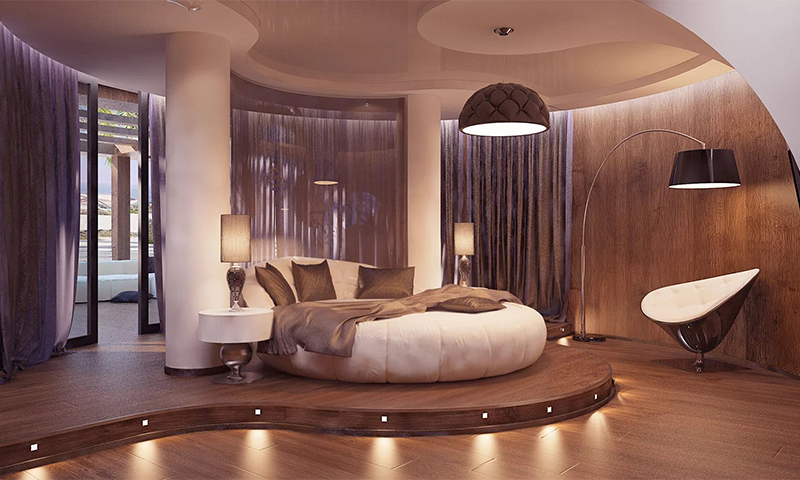
1. If neighbors from the upper floors suffer distraction and can leave the open water tap unattended, it is preferable to stop the choice on a PVC ceiling with a harpoon mount;
2. In the country, which is not heated all year round, you can install a fabric ceiling, which is not afraid of cold;
3. In the bathroom, in the kitchen and other rooms with high humidity, PVC ceiling will be appropriate. A glossy canvas can visually increase the area of a small bathroom.
4. For the guest in the high-tech style, in which extraordinary solutions are appreciated, it will be necessary by the way to be metallic;
5. Cloth with a pearl texture - a godsend for the luxurious interior of a large bedroom;
6. The velvet-coated flooring should not be used in the kitchen, as it is not practical enough. It can be used in the bedroom or in the living room.
7. Black or chocolate glossy ceiling with a large number of lamps visually expand the room where it is installed;
8. In the nursery you should not use bright glossy paintings, as they excite the child's psyche. Bright gloss will be good in the kitchen and in the bathroom, and for the children's room it is preferable to use satin in pastel colors.
How much is a suspended ceiling

The price for a stretch ceiling depends on the complexity of the design, the total amount of work, the material used, the number of built-in luminaires, the use of LED strips and other lighting.
It also depends on the type of wall covering where the work is being done. After all, it is much more difficult to install profiles to which the canvas will be attached to a tile than to a plastered wall.
Approximate price for 1 m² of installation of European fabric is as follows:
1. Fabric - from 650 to 1500 rubles;
2. PVC - from 350 to 450 rubles;
3. With photo printing - from 800 to 2000 rubles;
4. Textured - from 800 to 1200 rubles.
Prices are excluding installation of lamps, baguettes and other additional work.
It will be interesting to friends too





